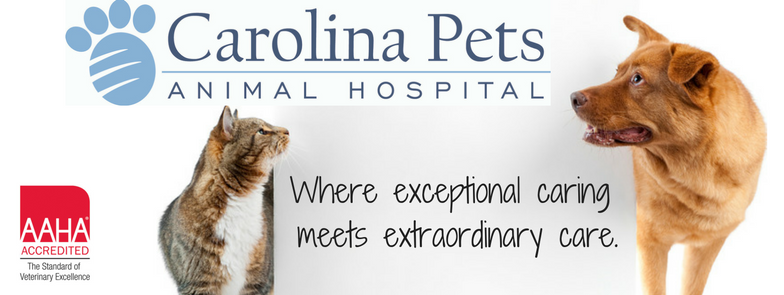What
is the scientific basis for ancestral diets and raw diets?
According to veterinary nutrition expert Dr. Tony Buffington,
historically, “natural diets” or “ancestral diets” referred to rodents/mammals
that fell prey to wolves and coyotes. Today, a "natural" diet more
commonly refers to a mixture of ingredients such as raw meats with or without
bones, vegetables and fruits. Some people believe that the act of ripping meat
off bones and chewing bones is more healthful for their pets. Early literature
reported that the natural diets of wild canids and felids had a plaque –
retardant effect, and that these animals did not have periodontal or other
diseases. Recent reports suggest this is entirely untrue. Although the value of
"ancestral diets” has been asserted by some, one must recall that the
ancestral lifespan for dogs and cats was likely only 2-3 years; some pets live
ten times that long currently.
Types
of Raw Diets?
There is no standardized raw diet. There are
many such diets that fit within two general categories: homemade raw recipes
and commercially prepared raw diets. Recipes for homemade diets can be found in
numerous pet nutrition books and websites. The strictest of raw diet feeders
are considered purists who feed only raw meat, bones, and eggs, but no fruit,
vegetables, or grains; these diets rarely include supplements to make them
balanced or complete. Many raw diet proponents believe that dogs and cats are
not capable of digesting grains, and that diets containing grains have led to
allergic and digestive diseases in companion animals (note: we are not saying
this is "correct" but just stating what purists believe) There
are several well-known homemade raw diets, including the BARF homemade diet
(standing for bones and raw food), the Ultimate diet, and the Volhard diet. In
many diets each meal is not meant to be balanced; however, over time the diets
aspire to provide balanced nutrition. Many pet owners have amended these
popular raw food diets to create their own recipes with or without additional
supplements. This can be a major problem because now the diets are
unbalanced.
For all raw diets, meat can be purchased in
bulk at local butcher shops, co-ops, and grocers. Commercially prepared raw
food diets are typically sold frozen, although refrigerated diets are also
available. One example is Dr. Billinghurst's commercial BARF diet marketed as
frozen patties that are to be thawed and fed raw. Most commercial diets contain
meat, bones, produce, and supplements to make a complete and balanced diet. The
act of freezing is suggested to kill most bacterial contamination; however many
bacteria are known to survive the freezing process. Although commercial diets
may be a more convenient way to feed raw, they may also be more expensive than
homemade diets and are considered "too processed" for many purist raw
diet proponents.
ARUGMENTS
FOR/AGAINST RAW DIETS?
FOR: Many argue in favor
of feeding raw food diets to pets because dogs and cats evolved as carnivores
eating raw foods, and the assertion that consumption of these diets result in
improved coat and skin, improved "energy levels,” and reduced incidence of
disease. Unfortunately, no evidence-based evaluation of raw food diets has
occurred to substantiate these facts. These reported results are anecdotal
reports only.
AGAINST: The likely incidence
of infectious disease or malnutrition from feeding raw food diets negate the
possible benefits. Reports of adverse effects of feeding these diets have
appeared in the veterinary literature for decades ranging from infectious
diseases your pet can contract (parasites, bacterial disease like salmonella)
and malnutrition from the diet not being balanced. Why does it get contaminated? All meats in
the food industry get contaminated because of handling (we are referring to
what is colloquially called “human grade food,” not that there is a difference
between people and animal grade meat products). In the wild a coyote or wolf
eats the whole carcass right away so it doesn’t get contaminated.
When
should raw diets not be a diet choice at all?
If there are any immunocompromised pets or people in the household
(e.g. children under a year of age, people on chemotherapy or immunosuppressive
drugs, pregnancy) or pets on immunosuppressive drugs. Pregnant women are at
extremely high risk for listeria and toxoplasmosis and since these can cause
miscarriage, it is recommended not to feed your pet raw diets during the entire
time of pregnancy.These people and pets are at high risk for serious,
potentially life-threatening infection if they contract one of the diseases
that can be acquired from raw food.
Pets can contract contaminants in raw foods and become
carriers for bacteria such as Salmonella or
E.coli and not appear physically ill,
but they can still infect people with these diseases by licking their owners or
in contaminated feces.
You want to feed raw
food…we need to be sure it’s a balanced diet. How?
Commercially prepared food MUST have an
AAFCO statement. This
is the most important preliminary piece of information on the label when
assessing if the diet is “healthy” and nutritionally balanced. The AAFCO statement will be one of only 2
types:
Nutritionally complete and balanced (or 100% nutritious) is
known or shown to be nutritionally complete.
For supplemental or intermittent feeding only is assumed or known to be nutritionally
incomplete as sole source of nutrition for an extended time. The specific
clinical sign that may appear first and when is dependent upon the first
limiting nutrient and magnitude of the variance from the recommended level
(toxicity or deficiency).
If the food has the first
claim, then it has been demonstrated to be balanced and nutritious. If it has
the second, then it is only intended as a supplement. If the food has no AAFCO
statement, then it cannot be considered a balanced/complete diet and may not be
“safe.”
We want to be
sure any raw diet that may be fed is safe and provides what your pet needs to
be healthy. This is even more important if you are home-cooking. Whether you home-cook a diet or buy one that is
commercially prepared there are many nutritional support services that provide
analyses such as: NCSU Veterinary Teaching Hospital’s nutrition department.
As long as none of the ingredients of a satisfactory diet are
contaminated, it should be safe for adult animals for months to years. We also
advise careful adherence to raw food handling procedures recommended by the
USDA http://www.fsis.usda.gov/Be_FoodSafe/BFS_Messages/index.asp, and to
schedule more frequent check-ups to provide more careful observation of the
pet.
SAFETY OF RAW PRODUCTS?
The is NO advantage to feeding “100% USDA
inspected” ingredients from a “USDA-inspected” facility. This is sometimes
a label claim on raw pet food.
The U.S. meat, poultry and egg supply is contaminated with micro-organisms (e.g., salmonella, listeria,
campylobacter). Meat from healthy animals becomes contaminated between
slaughter and display case. This is a notable difference from the “fresh kill”
raw meat consumed by feral omnivores and carnivores.
All meat and poultry products for human consumption are subject to
mandatory USDA inspection. But this is not a nutritional assessment and the
ingredients are not USDA “approved.”
*Consumer beware* The FDA
presumes purchasers of raw meat are aware of the potential risk and could take
measures to mitigate those risks. However, pet owners who may not be as aware
of the potential for harm feeding raw meat diets to companion animals has
raised concerns.
HOW TO HANDLE
RAW FOOD DIETS TO KEEP THEM AS SAFE AS POSSIBLE?
Use appropriate sanitary technique when handling
raw food, food bowls and feces gathered for disposal. This includes:
1. Always
buy irradiated meat (this doesn’t mean it’s radioactive but has been treated to
make it less contaminated. This is the
symbol to indicate it has been treated:
2. Wash hands prior to and following contact with
raw meat.
3. Use a
cutting board dedicated to raw meat prep.
4. Use a dedicated utensil for serving food.
5. Wash and disinfect food and water bowls and
serving utensil, ideally in a sink located in a place other than the kitchen or
bathroom. DO NOT USE A SINK TO WASH RAW MEATS because the water spray can
contaminate the entire area.
6. Avoid allowing young, elderly or
immunocompromised people to handle raw food diets.
7. Use high-quality ingredients that have been
properly stored.
8. Feed a reasonable amount of prepared food that
can be eaten in a limited time period.
9. Avoid feeding pets in kitchen.
10. Thaw frozen raw food diets in
fridge or microwave.
11. Refrigerate or discard food
immediately after preparation or after feeding time is over.
Thank you to information provided by Rebecca L. Remillard, PhD, DVM, DACVN,
Victoria Biondi, Kate KuKanich, DVM, PhD, DACVIM, and
Tony Buffington, DVM, PhD,
DACN
 First step is to know what you’re looking for when you examine
your pet to know if she’s got fleas. Fleas are little brown insects that jump.
They’re about the size of the head of a pin. Sometimes you can find them on
your pet. Sometimes you can’t because your pet may eat them as soon as they are
detected (hence the stop-drop-and-chew phenomenon we see with an infested
pet). You might see what we call “flea
dirt” which is black debris left by fleas. To confirm dirt isn’t just dirt,
take a few pieces of the black debris, put a small dab of water on white paper
and rub the debris through this. If there is a red smudge then that menas it’s
digested blood from fleas. And confirms the fleas are present.
First step is to know what you’re looking for when you examine
your pet to know if she’s got fleas. Fleas are little brown insects that jump.
They’re about the size of the head of a pin. Sometimes you can find them on
your pet. Sometimes you can’t because your pet may eat them as soon as they are
detected (hence the stop-drop-and-chew phenomenon we see with an infested
pet). You might see what we call “flea
dirt” which is black debris left by fleas. To confirm dirt isn’t just dirt,
take a few pieces of the black debris, put a small dab of water on white paper
and rub the debris through this. If there is a red smudge then that menas it’s
digested blood from fleas. And confirms the fleas are present.


























